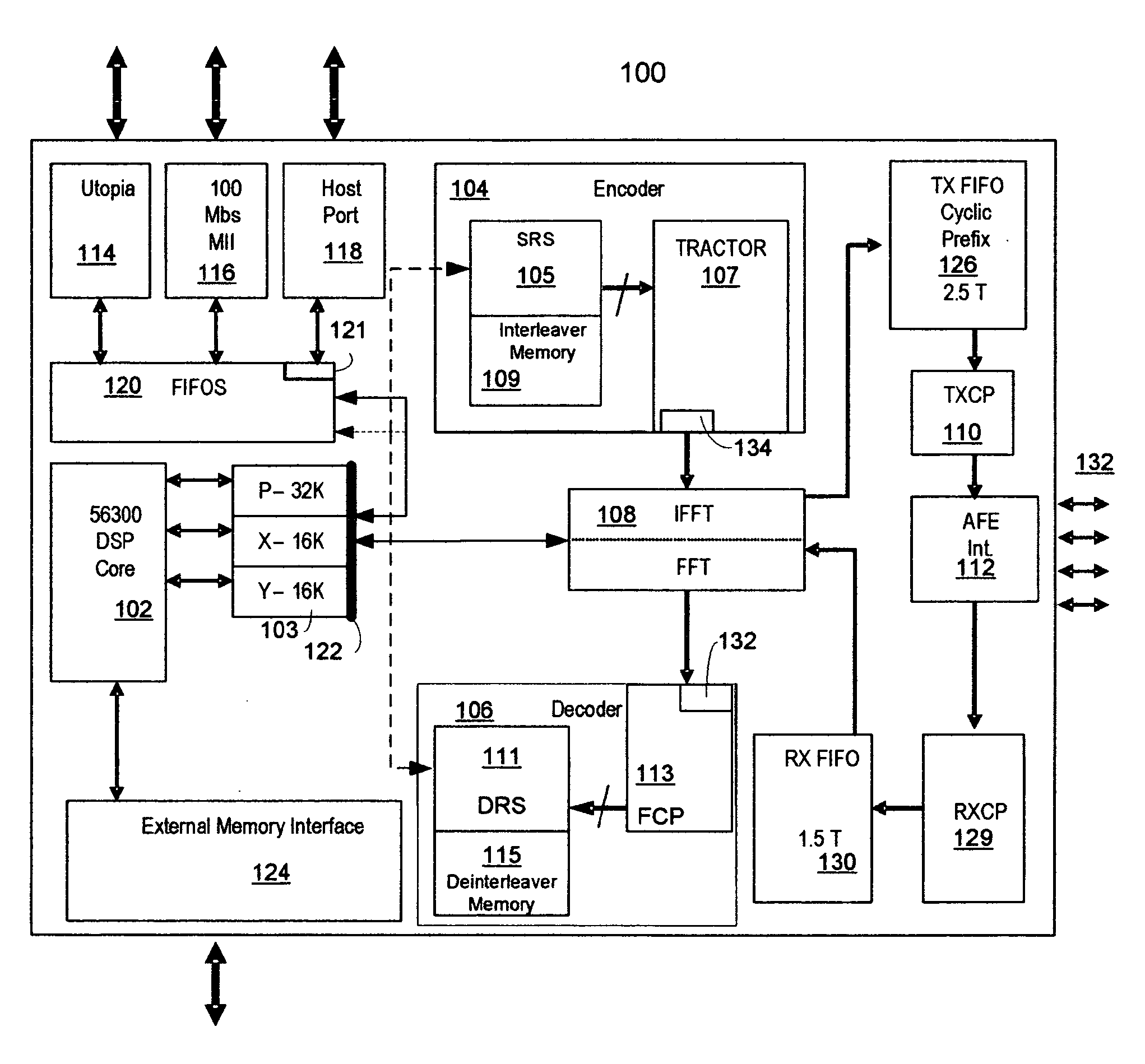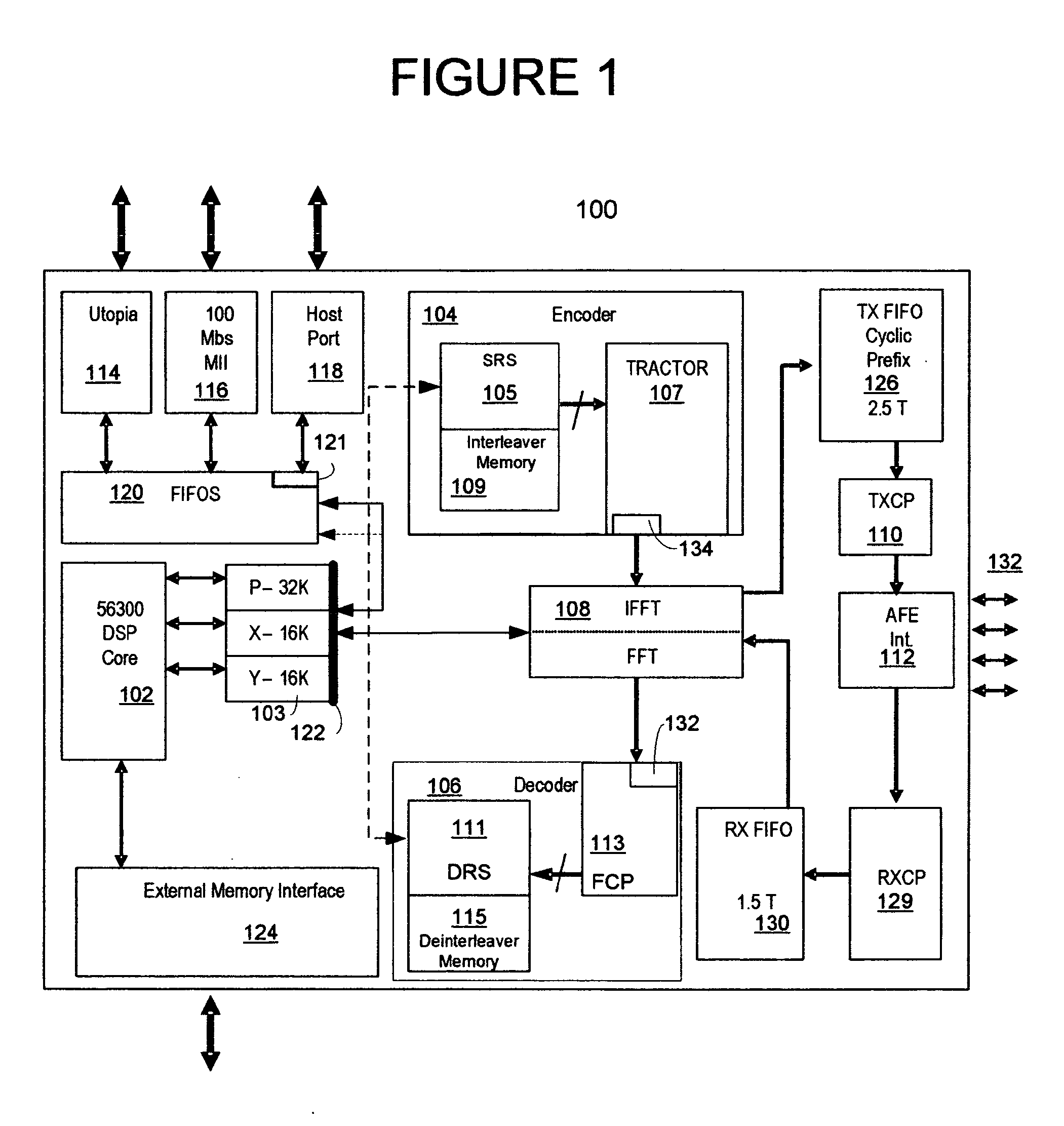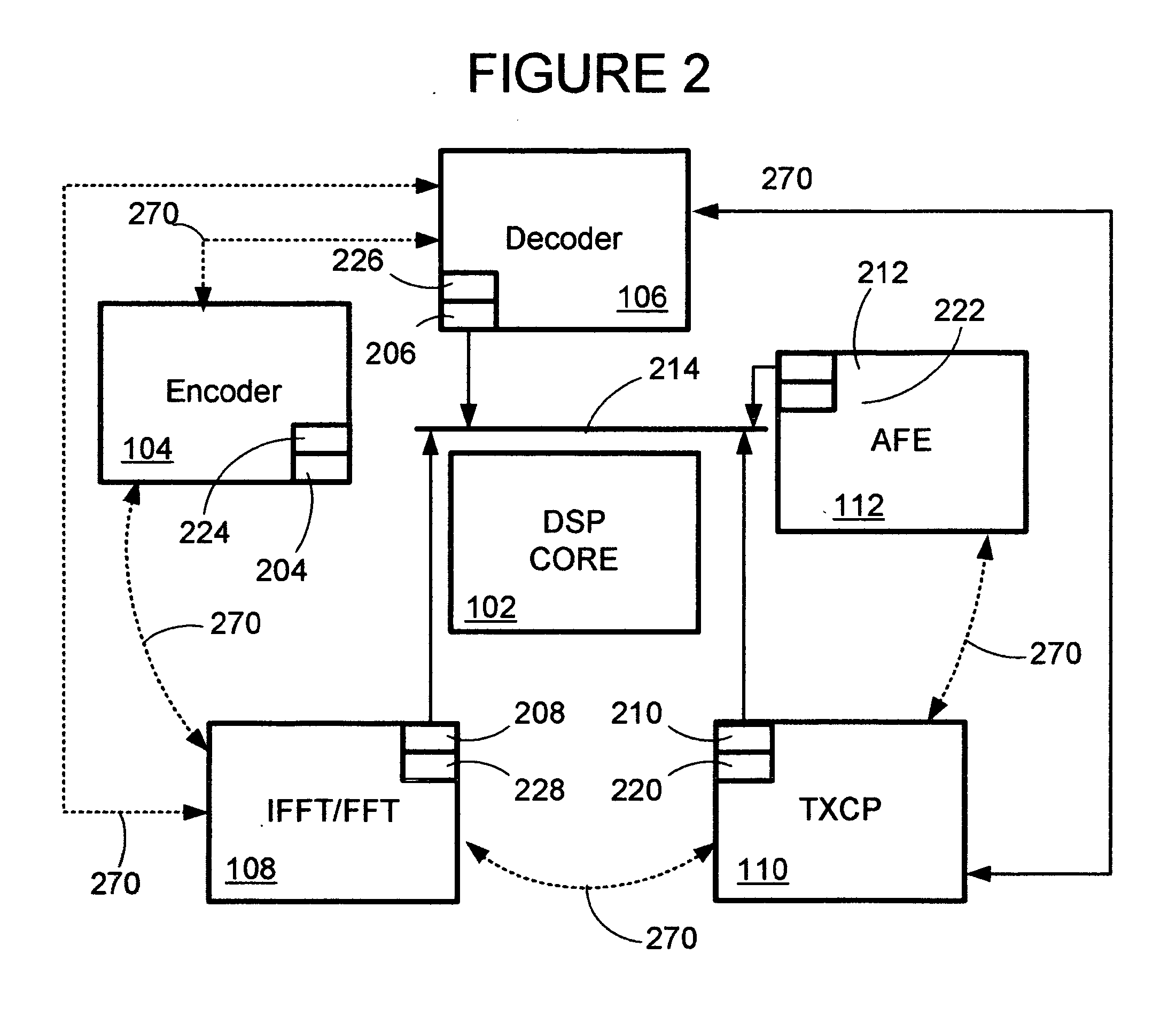Multiple Channel Digital Subscriber Line Framer/Deframer System and Method
a multi-channel digital subscriber and framer technology, applied in the field of multi-carrier transceivers, can solve the problems of high-speed data network access, high bandwidth consumption, and inability to access high-speed data networks, and achieve the effect of high configurableness
- Summary
- Abstract
- Description
- Claims
- Application Information
AI Technical Summary
Problems solved by technology
Method used
Image
Examples
Embodiment Construction
[0035]In order to facilitate an understanding of the present invention a glossary of terms used in the description of the present invention is provided below:
[0036]ADSL: Asynchronous Digital Subscriber Line
[0037]AFE: Analog Front End
[0038]AGU: Address Generation Unit
[0039]CRC: Cyclic Redundancy Code
[0040]DFT: Discrete Fourier Transform
[0041]DMA: Direct Memory Access
[0042]DMT: Discrete Multi Tone
[0043]DRS: De-interleaver / Reed-Solomon decoder and descrambler
[0044]DSP: Digital Signal Processor
[0045]FCP: FEQ Slicer
[0046]FEQ: Frequency Domain Equalizer
[0047]FIFO: First In / First Out Memory
[0048]FIR: Finite Impulse Response
[0049]FFT: Fast Fourier Transform
[0050]IFFT: Inverse Fast Fourier Transform
[0051]RXCP: Time Domain Receive Co-Processor
[0052]Showtime: Operations involving transfer of data
[0053]SRS: Framer / Scrambler / Reed-Solomon Encoder
[0054]TEQ: Time Domain Equalizer
[0055]TRACTOR: Trellis and Constellation Encoder / Bit and Tone Ordering component.
[0056]TXCP: Time Domain Transmit Co-Proc...
PUM
 Login to View More
Login to View More Abstract
Description
Claims
Application Information
 Login to View More
Login to View More - R&D
- Intellectual Property
- Life Sciences
- Materials
- Tech Scout
- Unparalleled Data Quality
- Higher Quality Content
- 60% Fewer Hallucinations
Browse by: Latest US Patents, China's latest patents, Technical Efficacy Thesaurus, Application Domain, Technology Topic, Popular Technical Reports.
© 2025 PatSnap. All rights reserved.Legal|Privacy policy|Modern Slavery Act Transparency Statement|Sitemap|About US| Contact US: help@patsnap.com



